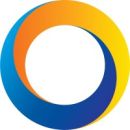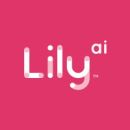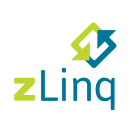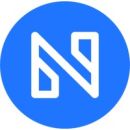Build connection. Achieve results. Enjoy the process.
At zLinq, prioritizing human connection is not just a motto; it’s ingrained in the ethos of its fully remote team.
Since 2020, remote work has become ubiquitous for many employers. While it offers numerous benefits, some employees — even introverts — struggle with the lack of human connection.
Replicating the in-person experience can be challenging, but companies like zLinq, Close, Doximity and Buildout continually innovate to enhance the work-from-home experience and foster camaraderie and collaboration. Built In recently spoke with these companies, and nine others, to uncover their secrets for making remote work feel more human.
Doximity is the leading digital platform for U.S. medical professionals.
What’s the key to creating real, human connection in the remote workplace?
“The key to connection is an environment that fosters empathy and trust.”
Like most human interactions, the key to creating human connection in the remote workplace is developing an environment that fosters empathy and trust. When companies prioritize empathy and understand that their employees are real people who have feelings, passions, and interests, they get a better sense of their individual needs, goals, and what motivates them. Approaching our workforce through this lens allows us to find similarities with each other while also respecting our differences. Once that happens, people begin to feel seen and heard, and valued for who they are and the work they bring to the table.
In addition to an empathic lens, you need to build trust. At Doximity, we believe in bringing your true authentic self to work and creating space for straight talk and open communication. This kind of openness helps break down barriers and empowers people across the organization to play an active role in conversations that shape our direction. When all voices are heard, people feel a sense of belonging and more connected to those around them.
What are the strategies you've employed for facilitating these kinds of connections?
I attribute our success in helping build real human connections to our communication style, our use of Slack, and our tradition of offsites.
Being in PeopleOps, I get to hear from a lot of people about their experiences at Doximity. I love when someone reaches out after an interaction to tell me, “Everyone I’ve met has been so genuine and so down to earth!” Our company is full of people who are exactly that, which has created a fairly casual, yet professional, communication style. We approach meetings and asynchronous messaging with an understanding that everyone is working towards the same goal and deserves the same respect.
This approach also carries over into our Slack community. We have quite a few social Slack channels for folks to share a bit about their lives or share experiences together. It sounds simple, but it really does bring people closer! Even using a Slack status like “running errands/tending to kids” reminds us that we’re all human balancing working and life together.
Lastly, our offsites offer us a chance to come together in person. With thoughtfully planned programming and fun social activities, the whole event is designed to build stronger relationships
What impact have these had on your workforce or culture?
For the past several years, our annual employee survey shows that “People and Culture” have been the top reasons people love working at Doximity. While “culture” could certainly encompass a broad range of factors, I believe our focus on empathy and building trust is what really defines our “culture”. As a result, most of our founding leaders and many original employees are still with us, and that’s not something you see every day in tech.
We’ve also been awarded several recognitions for Best Places to Work, as well as awards for our products, which are nice reminders that we’re doing something right! Without human connection at Doximity, we couldn’t be who we are today. Our connection and shared mission is what will continue to drive us forward for years to come.
Buildout, Inc. designs and develops end-to-end solutions for commercial real estate listing.
What’s the key to creating real, human connection in the remote workplace?
I try to keep it simple, so I don’t get bogged down in trying to get it perfect. I think it’s about finding ways to make connections that have more longevity and substance than those built solely through collaboration — and doing so in a way that is structured and spontaneous. In the remote world, you have to build a little structure into your spontaneity. This means someone needs to take the helm and be responsible for fostering these connections and crafting spaces where spontaneity can flourish organically.
What are the strategies you've employed for facilitating these kinds of connections?
I’ve got a few tricks up my sleeve when it comes to facilitating these connections, all centered around getting people to open up about something personal.
HOW BUILDOUT FACILITATES CONNECTION
- Connecting individuals with shared interests by adding them to Slack channels tailored to commonalities such as parents, pet lovers, plant enthusiasts and book lovers, fostering a sense of belonging and supporting a cohesive company culture
- Utilizing Donut, a Slack integration, to randomly pair individuals from different areas of the company, facilitating unexpected yet rewarding connections akin to making new friends in the cafeteria line, thereby enhancing collective creativity and fostering diverse relationships
What kind of response have you heard from your team?
We recently held an all-company meeting in person. Many of us had never actually met each other before, and it can be scary and daunting to approach a stranger and introduce yourself — especially now that we’re remote. The feedback I received indicated that by fostering these connections before the in-person meeting, we managed to alleviate some of those fears. People who might never have approached each other were able to easily recognize and approach colleagues across the room with something to talk about, easing awkwardness and making the event more enjoyable and productive for everyone involved.
Mission Cloud is a born-in-the-cloud managed services and consulting provider, offering AWS customers end-to-end cloud services and software.
What's the key to creating real, human connection in the remote workplace?
Open intentional communication and connecting regularly, like leveraging Zoom, Slack or email to stay in constant communication not only about work projects but also to find out how your co-workers’ kids’ soccer game went. In short, giving employees opportunities to connect on common ground.
We have also established and live by a team commitment that outlines how we will work and connect.
What are the strategies you've employed for facilitating these kinds of connections?
We recently conducted an interconnectedness survey, and then hosted a call to share the results. This encouraged employees to connect on a personal level with fellow pet owners, travel bugs and crafters.
DONNELLY’S ADVICE TO COMPANIES
Donnelly encourages companies to establish an environment where team members feel comfortable sharing thoughts, concerns and personal experiences through 1:1, skip-level meetings and virtual coffee chats.
What impact have these had on your workforce or culture?
Our topic-specific Slack channels are very busy. Many employees who would not otherwise cross paths on projects share common personal interests, such as gardening or music. Our ERGs also offer company events and programs, and we’ve received positive feedback on our employee engagement surveys about the way the company has built a distributed team and a commitment to our culture.
Lily AI is a product attributes platform that injects the language of customers across existing retail stacks, connecting shoppers with relevant products they’re looking to buy.
What's the key to creating real, human connection in the remote workplace?
It’s an intentional and continuous effort for our people team. We strive to create meaningful interactions, which include regular happy hours, lunch and learns, meet and greets, donut calls and manager learning sessions. We try to promote our values through our meetings and our communication channels, like Slack. By prioritizing these connections we can provide an engaged workforce that is supportive and kind to each other.
What are the strategies you've employed for facilitating these kinds of connections?
Our first priority is to hire smart and nice people that align with our company values. We have heart. We empower people. We move together. We create impact. We have grit.
“Our first priority is to hire smart and nice people and candidates that align with our company values.”
We create a one-week onboarding plan with scheduled meetings and meet and greets for a new employee’s first week that offers information and connections from within and outside of their team. We also have touch points with every employee at 30, 60 and 90 days, alongside our company connection meetings, all of which provide an immediate support system.
Beyond onboarding, we hold social events and initiatives, like our companywide hackathon. It was engineering-led led and people from across the company participated to collaborate on new, creative ideas. We’ll certainly continue hosting more hackathons in the future, along with offering other collaborative opportunities.
What kind of response have you heard from your team?
Our team has been very vocal about how much they appreciate the onboarding experience and the accessibility to create connections within the organization. This has positively affected our workforce and culture by enabling us to be successful in a short period. We have had multiple people expanding their roles in short periods and have a one percent voluntary attrition rate.
Snapsheet is an insurance technology company bringing the future to auto claims processing.
What’s the key to creating real, human connection in the remote workplace?
Connecting humans! In a remote workplace, you have to be intentional about creating connection points, and to do this well, you need to understand your people. Since going fully remote in 2020, we’ve experimented with different offerings from externally hosted events like virtual cookie decorating to casual social hours and all-org talent development sessions. To ensure we’re offering programs that engage employees, we send two employee opinion surveys per year, in addition to more casual pre- and post-event surveys. What we’ve learned is that across our three primary business units, different touch points resonate more with different departments. This has allowed us to craft a blend of programs — some for specific departments and others with a wider appeal.
What are the strategies you've employed for facilitating these kinds of connections?
At the companywide level, we provide monthly opportunities for employees to connect with team members across the business, and our offerings vary each quarter to engage a broader spectrum of our population. A typical quarter might include a virtual town hall with executives, a training session on 401(k) planning, and an EmpowerHour, our informal lunch-and-learn series. While not every employee will attend each event, our goal is to diversify the activities to maximize participation across the company throughout the quarter.
“Our goal is to diversify our activities to maximize participation across the company.”
What impact have these had on your workforce or culture?
Our employees highly value the opportunity to step away from the daily grind and build relationships. Our virtual touchpoints are well received, but in-person connection is the most effective. Each year, we host two in-person events: our annual on-site for corporate teams and managers and our roadshow program tailored for our estimating and customer success employees, both resulting in a measurable impact on retention, morale and productivity. And the feedback from our surveys is consistent — the number one request from employees is to expand these two programs.
Drata is a security and compliance automation platform that continuously monitors and collects evidence of a company’s security controls while streamlining compliance workflows end to end.
What’s the key to creating real, human connection in the remote workplace?
Drata was founded during the pandemic in 2020 and remains entirely remote. We understand that creating a collaborative learning environment in this setting is challenging. To combat this, Drata utilizes various tools like Slack to spark lively chats and connections, including location-specific channels for meetups, activities and dinners, and Gong to capture key insights for continued development.
OTHER WAYS DRATA FACILITATES CONNECTION
- Implementing team-specific off-sites
- Leveraging peer-led content and quarterly training that tap into expert brains and facilitate knowledge sharing.
- Ensuring transparency by providing department updates during companywide meetings, keeping the energy high and collaboration strong
What are the strategies you’ve employed for facilitating these kinds of connections?
Our global team thrives on a mix of live and virtual learning, ditching traditional lectures for interactive, hands-on experiences during crucial gatherings like quarterly business reviews and team-specific off-sites. We harness the power of face-to-face moments to forge deeper connections and collaboration.
We also look at onboarding as a team sport, bringing new hires on board in cohorts to foster a supportive peer network right from the start. Our onboarding blends live and on-demand content paced just right to keep information fresh without overwhelming. Cross-departmental meet-ups during this phase help new hires sync up with key teams they’ll work alongside. Additionally, for virtual events like QBRs, we’ve mastered the art of engaging, concise agendas. We pack what used to be days of content into lively half-day sessions with plenty of breaks to keep energy high and minds sharp.
What kind of response have you heard from your team?
Employees find our interactive dynamic to be our secret sauce for fostering collaboration remotely. For our virtual QBRs, we crank up the fun factor to keep everyone dialed in by rotating through a lineup of dynamic speakers to keep things fresh, inserting plenty of breaks to recharge and connect with peers and providing engaging activities throughout. There are opportunities to work through objection handling in breakout rooms and dive into trivia contests about our latest products, which in turn makes for learning both effective and enjoyable.
We received fantastic feedback on our recent virtual QBRs. Participants praised the quality of our content and exercises, saying they felt a strong sense of connection throughout the event which has encouraged us to continue hosting them.
Thumbtack helps millions of people confidently care for and improve their homes.
What's the key to creating real, human connection in the remote workplace?
Creating real, human connection requires quality time and vulnerability — especially in a remote workplace. It’s important to follow the same tenets required to build relationships. In a remote workplace, the key is to be deliberate about investing in building connections among employees. This could mean prioritizing bonding outside of regular team meetings, carving out time during meetings for connection or even sending employees a quick message or text. While you may not be able to see someone in person to catch up, you can be intentional about finding time to hop on a quick call to connect instead.
“While you may not be able to see someone in person to catch up, you can be intentional about finding time to hop on a quick call instead.”
What are the strategies you’ve employed for facilitating these kinds of connections?
Our most successful initiative that we’ve employed for facilitating deep connection is our Courageous Conversation series hosted by our ERGs. In the past, these conversations were hosted by external speakers, but we’ve learned the power of internal stories and have leveraged the platforms and affinities of our various ERGs to highlight issues and open up dialogue.
Courageous Conversations provides the entire company a platform to open up and share more about themselves. We have found tremendous power in sharing real stories and courageously discussing topics from mental health challenges and raising neurodiverse children to immigrant stories and more. Each conversation helps to foster open dialogue and set the norm for workplace connection and community. Our employees not only deepen their understanding of topics but also gain access to spaces and communities where they can build connections outside of their regular team meetings and cross-functional partners.
What kind of response have you heard from your team?
Our employees feel a sense of belonging, inclusion, trust and support from leaders. This is because leaders attend and often speak on our panels. The openness and vulnerability displayed by our leaders is a huge aspect of our culture. During our most recent employee engagement survey, Thumbtackers reported feeling a sense of inclusion resulting in a belonging score of 77 out of 100. Moreover, employees reported feeling psychologically safe at work, scoring 76 out of 100. Being deliberate about building deep connections has resulted in employees feeling supported and able to do their best work.
zLinq provides software and services to manage its enterprise customers’ communication lifecycle.
What’s the key to creating real, human connection in the remote workplace?
The key is remembering that we’re all human. While facing professional demands daily, on a high-performing team, each zLinqer has their own circumstances outside of work, and it’s critical to create a work environment where people can show up each day knowing that they’re seen, supported and celebrated for their accomplishments at work and in life.
We regularly use conversation catalysts to encourage zLinqers to get to know one another outside of their jobs, and every meeting that our team joins is on video so we can feel together without physically being together. This enables us to observe physical cues that might be missed if we were only on a conference bridge or exchanging emails.
Lastly, having fun is part of our cultural DNA. While everyone is committed to doing quality work, we have an environment where it’s common to hear people crack a joke, share a pun and bring levity into the daily grind.
What are the strategies you’ve employed for facilitating these kinds of connections?
Human connections are facilitated by caring about the team on a human level, listening to the team’s input and being open to implementing new ideas. A team comes from all different stages of life and careers. We’re always quick to celebrate exciting life milestones and conversely, the team is equally supportive during the more challenging life phases too.
OTHER WAYS ZLINQ FACILITATES CONNECTION
- Kickoffs and president’s club trips
- Remote chat groups for sharing ideas and experiences
- “Mix and mingle” sessions to find common ground
What impact have these had on your workforce or culture?
These initiatives have enabled us to create one of the best company cultures around. The initiatives may seem simple, but most employees have shared that they’ve never worked somewhere with a team culture quite like ours.
From a data perspective, we earned 90 percent on our most recent Gallup Employee Engagement Survey, in which the team reported feeling supported and encouraged day in and day out and recognized for their performance. Our employees know that the zLinq team has their back no matter what your role. There’s a strong bond of personal and professional trust, and because of this, zLinq continues to deliver results and thrive as an organization.
ezCater is a leading food-for-work technology company, connecting anyone who needs food for their workplace to over 100,000 restaurants nationwide.
What's the key to creating real, human connection in the remote workplace?
Genuine human connections are dependent on one thing: vulnerability. Most days, I make the 35-step commute to my home office in a great mood, ready to take on my awesome job. But despite how short my “commute” is, it doesn’t always go gracefully. One morning in particular, I tripped over my office rug with my coffee in hand and my laptop was the recipient. It would have been easy to tidy up and carry on, but sometimes, authenticity is the glue of connection. There’s magic in showing up as your flawed, genuine self — and that might include sharing a funny story about tripping over the rug and turning my morning coffee into a laptop bath.
Surprisingly, we’ve all bonded over the unglamorous realities of remote work, as these types of conversations happen often on my team. When we embrace vulnerability, we create a safe space for others to do the same, which fosters connections that transcend virtual boundaries. My colleagues feel like friends rather than strangers when we meet in person.
“There’s magic in showing up as your flawed, genuine self. When we embrace vulnerability, we create a safe space for others to do the same.”
What are the strategies you’ve employed for facilitating these kinds of connections?
In my role, I aim to foster a culture of continual learning, helping our people grow and develop skills internally. The kickoff of this strategy is a series of interactive sessions designed for new employees to familiarize themselves with ezCater, our platform and business operations. For the finale of this series, remote members engage with local food pantries, providing them with free catered lunches. Sometimes this makes employees nervous, but I stress the importance of being transparent and honest with the food pantries — it’s not a sales pitch, it’s a free lunch! It’s also a chance for employees to connect with someone new, beyond the office circle.
I relish guiding the cohort through the ezCater platform and their calls. This activity, alongside broader learning and development sessions, fosters a unique bond among new employees and allows them to build cross-functional connections in a way they’d never experience in the office.
What impact have these had on your workforce or culture?
Right off the bat, we noticed a boost in appreciation for our customer service agents and our customers. This exercise has also fostered a more collaborative environment, with individuals feeling at ease working together. Product teams have eagerly reached out to our Customer Care organization to get more insight into improving our platform — while our sales team exudes confidence in showcasing the benefits of ordering on ezCater.
Close offers a CRM platform designed to be secure, quick to set up, easy to use and compatible with other popular tools and apps.
What's the key to creating real, human connection in the remote workplace?
As an entirely remote company, we have to be deliberate about creating opportunities for authentic connection. At Close, “invest in each other” is one of our company values and a very well-loved one. We care deeply about relationships with our team and customers. Friendships at work contribute to overall happiness and longevity in their role, so when we hire, we look for people who are amazing at their craft while also kind, respectful and trustworthy.
What are the strategies you’ve employed for facilitating these kinds of connections?
Our commitment to meaningful relationships helps to guide decisions throughout our employee experience in how we think about hiring, onboarding, developing talent and driving engagement on our team. We’ve focused on creating intentional opportunities for connection and letting the rest unfold organically. Setting clear expectations and guidelines without being overly prescriptive allows team members to act most naturally and how best they see fit. For example, the PeopleOps team proactively sets up new-hire coffee chats but does not arbitrarily assign participants or discussion topics. Instead, team members sign up and choose whatever they would like to chat about.
What kind of response have you heard from your team?
We consistently hear that being part of a team that values its people and culture is among the primary reasons why people enjoy working at Close.
CLOSE’S REAL EMPLOYEE FEEDBACK
- “There’s a sincere desire to know each other on a deeper level, which makes working here a satisfying experience.”
- “It blows my mind how in sync the entire team is regarding our values, kindness and collaboration. It’s is so easy to work with everyone.”
- “We all care immensely about the work we do and are encouraged to practice healthy work-life balance.”
- “For the first time, I feel like I am a person who can contribute to the team, not just a number.”
SeatGeek is the leading mobile-focused ticket platform that enables fans to buy and sell tickets for sports, concert and theater events.
What’s the key to creating real, human connection in the remote workplace?
We strive to help our team members expect more from their experience at SeatGeek. Working to cultivate a culture of innovation and inclusivity never ends; it requires consistent attention and flexibility to achieve. Part of that is designing programs that integrate an array of perspectives. Simply setting up a remote happy hour alone isn’t enough. What is the draw of that event? How might that team member’s day, workload or career be impacted if they attend?
“Working to cultivate a culture of innovation and inclusivity never ends; it requires consistent attention and flexibility to achieve.”
If I could trace every success I’ve found in designing remote experiences back to one key feature, it would undoubtedly be a mindset of openness, attention to detail and the willingness to explore new ideas and iterations. The ability to take a risk and move past failures always keeps us moving in the right direction. Foster an environment of creativity, listening, acceptance, and iteration around you, and you will never run out of ideas for facilitating connections.
What are the strategies you’ve employed for facilitating these kinds of connections?
My most successful programs or events give team members the space and opportunity to engage however they can that day. Like the best role-playing games, I employ a “choose-your-own-adventure” approach to program design. Hackathon, one of our most beloved long-term programs, is a great example. Hackathons allow anyone at SeatGeek to take two days to focus on a project, opportunity or gap they have identified and build a solution. This event, which we most recently hosted in April, has participants as San Francisco and Bar Lev.
With a majority of our team working remotely, we aim to build programming that is accessible across every team, office and location. We include event opportunities within our agenda that support in-person connection, such as a hybrid meet and greet, but also support asynchronous participation, like our remote volunteering sessions and games. Hackathons have become quintessential to the SeatGeek experience and will continue to grow and build on the successes and learnings of the last.
What impact have these had on your workforce or culture?
The spirit of Hackathon is something I embed in the planning of many of our programs. You can’t build company culture in a vacuum. It is built from the ground up by members of our team, and remembering that is the biggest game changer in bringing people together remotely.
Hackathons allow team members to work on projects and meet team members they may never have otherwise. In doing so, they can collaborate with diverse groups of individuals, including fellow participants, event admins and judges. Our judging panel in each Hackathon includes many forward-thinking leaders from various departments with unique expertise and experiences who review projects and ideas submitted by participants and teams spanning different levels and geographic locations. Hackathons have inspired some of our customers’ and clients’ favorite features and some of our internal teams’ most inspired resources and workflows. This break from the norm also makes room to connect socially and enhances engagement while creating a voice for our team members and an outlet for creativity and innovation.
Nativo is a storytelling platform offering advertisers formats and available content for native ads, which they can then select and customize to be disseminated around the web.
What's the key to creating real, human connection in the remote workplace?
A culture built on empathy, inclusion and purpose. Let’s forget the debate between remote, in-office or hybrid work. The future of work demands we focus on how we work — not where.
HOW NATIVO FACILITATES CONNECTION
- Creating a safe, inclusive space where everyone’s voice matters, valuing diverse experiences and inviting all to contribute
- Setting clear goals for collaboration and empowering individuals with decentralized decision-making
- Using technology to streamline tasks and free up time for meaningful work.
- Documenting processes for efficient remote teamwork
What are the strategies you’ve employed for facilitating these kinds of connections?
Shifting from top-down to truly inclusive decision making. In 2021, our leadership approach was a roadblock. Decisions made exclusively by executives left our talented employees feeling undervalued. We transformed this by refreshing our core values, engaging diverse voices, expanding our leadership, embracing transparency and prioritizing open dialogue.
The impact has been undeniable. Employees know their ideas won’t always win, but they value being part of the process. That sense of collective contribution and respect is the bedrock of genuine connection.
What impact have these had on your workforce or culture?
The impact on our workforce and culture has been transformative. Beyond positive feedback and constructive dialogue, the numbers tell a compelling story. Our employee surveys consistently improve, exceeding industry benchmarks with strong leadership support. The past two years saw our lowest turnover in company history, demonstrating employee commitment and connection. What’s more, nearly one-third of new hires come from employee recommendations, a testament to our supportive work environment.
This initiative has also sparked deeper conversations about long-term employee development. We understand careers are journeys, and we’re committed to providing experiences that help our people reach their full potential for as long as they’re with us.




























